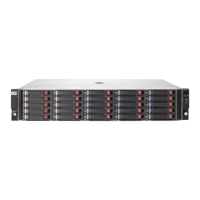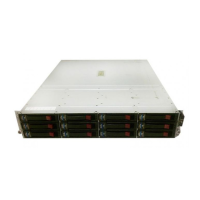SendTargets command
With the SendTargets command, administrators configure the address of each target portal, setting
up a range of target addresses for discovery. In a discovery session, an initiator sends the SendTarget
command to discover all of the accessible target node names. SendTargets is recommended for
small iSCSI SANs.
Service Location Protocol
Clients (initiators) discover services (targets) using SLP, a client-server protocol. SLP for iSCSI uses three
components:
• An iSCSI initiator has an SLP UA that serves as a client.
• iSCSI targets have an SLP SA that acts as an SLP server.
• A DA interprets multicast service requests from the server.
Initiators use three techniques for discovering targets:
• Unicast discovery service requests to the DA
• Multicast discovery service requests to SAs
• Unicast discovery service requests directly to an SA
Internet Storage Name Service
The iSNS is a client-server discovery protocol. It provides naming and resource discovery services for
storage systems on the IP network. The iSNS is modeled on both IP and Fibre Channel. iSNS
components include:
• iSNS server—A directory server with optional security features.
• iSCSI initiators with iSNS client capabilities—The initiator iSNS client registers the initiator with the
iSNS server and queries for a list of targets.
• iSCSI targets with iSNS client capabilities—The target iSNS client registers the target with the iSNS
server.
Sessions and logins
A session is a data exchange between an initiator and target. At the beginning of a session, information
about the session is exchanged; later, application data is exchanged.
A session is enabled through an iSCSI login process:
1. The initiator establishes a TCP/IP connection.
2. The initiator starts the iSCSI login phase.
3. The initiator and target negotiate variable parameters.
4. Optional—The target checks allowable connectivity with a security phase.
5. At the completion of the iSCSI login phase:
• Success means the target sends a login accept to the initiator; the session continues.
• Failure means the login is rejected; the TCP/IP connection is closed.
During iSCSI login, the initiator and target negotiate the lowest mutually acceptable value for each
parameter. Negotiable parameters include:
• Type of security protocol, if any
iSCSI storage358

